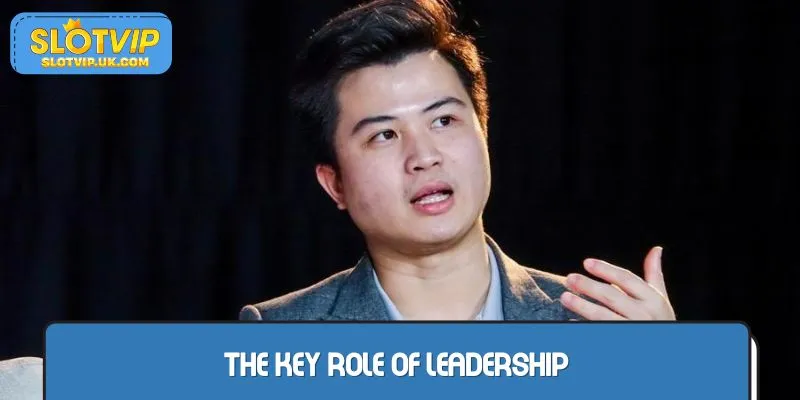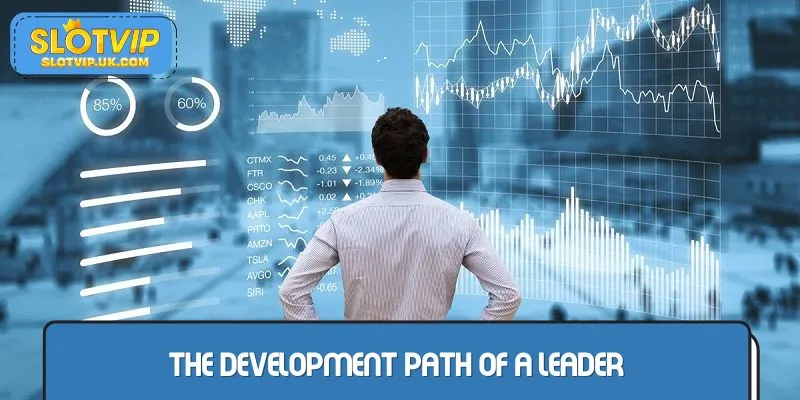The role of a CEO SLOTVIP is vital in shaping a company’s success through strong leadership and clear vision. A tip leader must balance strategic planning with day-to-day management to drive growth and innovation. This article explores the key responsibilities and skills required to excel in this demanding position.
Contents
Understanding the comprehensive role of a CEO
The responsibilities of a CEO extend far beyond boardroom meetings and corporate speeches. They are the ultimate decision-makers, shaping the future of the company while managing people, culture, and financial performance.

Setting a strategic vision
Every company needs direction, and that starts with a clear vision from the top. A CEO crafts a strategy that aligns short-term actions with long-term objectives. For instance, entering a new market might require balancing innovation, risk, and resource allocation. The vision must be communicated consistently to all levels of the company.
A disconnected team leads to poor execution, while a unified vision motivates departments to work collaboratively toward common goals.
Operational oversight and execution
Execution is where strategies succeed or fail. The leader monitor performance through data, KPIs, and reports, and adjust strategies based on real-time results. This may involve reallocating budgets, changing leadership within teams, or modifying processes. Operational leadership also means being accessible.
Great executive don’t hide in offices—they listen to staff, visit departments, and understand how front-line decisions impact broader objectives.
Representing the company
Externally, a CEO must manage relationships with investors, the media, regulators, and customers. Their public image can influence stock prices, partnerships, and employee morale. In times of crisis, stakeholders look to the CEO for confidence and clarity.
Public speaking, diplomacy, and trust-building are not optional—they are essential parts of modern leadership. A company’s reputation often rests on the credibility of its leader.
Essential skills every CEO must master for success

Even with experience, no one becomes a successful leader overnight. It requires constant development across various domains, both technical and interpersonal.
Communication and emotional intelligence
Without clear communication, even the best strategy can fail. CEOs must inspire, persuade, and align their teams through language and tone. For example, explaining a company restructure requires empathy and clarity to avoid fear or confusion. Emotional intelligence also helps he build inclusive environments.
Understanding others’ perspectives helps defuse tension and builds lasting trust within teams.
Financial acumen and risk management
Good top leaders read financial statements like stories. Numbers reveal what’s working, what’s failing, and where opportunities lie. For example, a sudden dip in operating margin might signal inefficiencies in production or rising material costs.
Risk management isn’t about avoiding danger, but preparing for it. The executive must foresee potential obstacles—economic downturns, cybersecurity threats, legal disputes—and plan accordingly to protect the business.
Innovation and change leadership
Companies that resist change fall behind. The top leader should be the first to advocate for innovation, whether it’s adopting AI tools, exploring remote work models, or rethinking register SLOTVIP. But innovation alone isn’t enough.
He must guide their teams through transitions, helping them adapt while staying focused on the mission. Change management means maintaining momentum during disruption and minimizing resistance.
Strategic decision-making under pressure
In high-stakes situations, the top leader don’t have the luxury of indecision. Whether it’s an acquisition, a product recall, or a public scandal, they must assess available data quickly and act with authority. The best CEOs are not afraid to make tough calls—and they take responsibility for outcomes.
Learning from both wins and losses is critical to long-term success. Consider how many leaders were forced to respond to the global pandemic in 2020. The top leader had to quickly transition entire workforces to remote setups, pivot product offerings, and address sudden supply chain breakdowns—all while maintaining morale and trust.
Team building and talent development
People are a company’s most valuable asset. CEOs need to attract, retain, and develop top talent. This includes creating mentorship systems, recognizing achievement, and ensuring diversity in leadership. Strong teams reflect strong leadership. The top leader who nurture their workforce tend to build more resilient, innovative companies that outperform competitors in the long run.
Insights from Nguyen Manh Hung on CEO leadership

Nguyen Manh Hung is a respected Vietnamese business strategist, author, and leadership advisor. With over two decades of experience coaching executives across Asia, his insights help shape modern leadership principles.
Adaptive leadership in a fast-changing world
Hùng teaches that rigidity is dangerous in today’s environment. Whether dealing with digital transformation, new regulations, or social change, CEOs must be willing to revise outdated systems and pivot quickly. His approach emphasizes “leading through learning” — encouraging the executive to stay curious, ask questions, and treat failure as a teacher.
One misstep in communication—like an insensitive tweet or a poorly timed product launch—can cause stock prices to fall or reputations to suffer. The executive today must also address social issues and be accountable for their company’s values, as consumers increasingly expect ethical leadership.
Building a culture of accountability
One of Hùng’s core principles is fostering a culture where people take ownership of their work. He argues that he should lead by example, showing transparency in their actions and admitting mistakes when necessary. By cultivating accountability from the top down, he can build teams that operate with integrity and self-motivation.
Vision-driven execution
Hùng believes that visionary thinking must be tied to execution. A dream without a plan is just a wish. The executive, he says, must bridge inspiration with practical implementation—setting clear milestones and measuring progress consistently.
Without follow-through, even the boldest vision fades. The executive must design implementation strategies with checkpoints, responsible parties, and feedback loops. They must also be willing to adjust when goals aren’t met—not by blaming others, but by refining the process.
Conclusion
To succeed as a CEO, one must combine vision, discipline, and adaptability. Mastering the skills of leadership, communication, and strategy is essential. True impact is achieved by guiding people and organizations toward meaningful, measurable progress.
